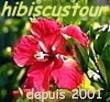-

"hibiscustour", three separate sites -
Islands and lagoons New Caledonia, Polynesia (part). -

Curiosity. Things, amazing, science, society.. -

Ideas perso. Household, Practical life, D.I.Y, Computering..
 
but reality |
  |
Life of the
lagoon 2b
A fish which fools others with a forgery large eye towards
the tail.
Fish
bird
(labre)
Another fish bird
Triggerfish mirror
Sparrowhawk
fish, not easy to discover,
for it practically does not move.
But it is nothing compared to the stone fish, even more
discret.
Nautilus ; The specie was there 500 millions years
ago, but they
just have observed its reproduction. Alike its
cousins octopuses and squids, this cephalopod
has small tentacles and eyes.
by réaction.
To
know more (scratches, moon..)
It is a starfish, the acanthaster,
which devours the corals and cause to them large
damages.
Ray or tortoises, it
is always a marvellous encounter.
The ray of the lagoon is
the stingray wich has a blade on the end of its longf
tail

The
ray
"pastenague" (in french).
Fearsome when fighting with
another animal, there is no danger because it flees away
when trying to touch it, being half burried in the sand at the
bottom of the water (I noticed that myself).
Spotted cod
(merou and
loche in french) can reach 80 kgs. (178 lb)
The fish see the colors by dichromy (bases of two colors), at the contrary of
humans which see in three-colour process (three types of cones paper the eye, like in the tube TV
); therefore, it should be known that at
10 meters deep, all is already blue (for us).
And for them ?
- The marine animals move while
crawling, walking on their fins, swimming, stuck to others and also by
reaction.
See
also "extraordinary
fish" (is worth the clic) and "the life
of the lagoon" hereafter.
| In
Nouméa,
amid a pretigious settingd.
the
aquarium of lagoons
+
(2007).
In a themes
park,
it is a comprehensibe view of the whole hydro-eco-system
of the New Caledonia which is offered to the vistor.
The visit follows a way
starting from the mountains, the rivers and arriving on the
coast, its mangroves, then the
lagoon and the reefs. Both a very original an vocational program. Promenade Roger Laroque. |
 Behind the screen of the computer, we can read videos, make a virtual visit with some stops at pools along with audio comments that are starting with a single click. |
See net sites, guide of underwater fauna, Red Sea and Indian Ocean (series " fish") rather comprehensive, . Steven Weinberg, Red Sea and Indian Ocean, fish, sea urchins, starfishes, anemones, corals.
![]() next, Vie du lagon 3 (origin, sea, depth, madreporia, corals and madreporia, tentacles..)
next, Vie du lagon 3 (origin, sea, depth, madreporia, corals and madreporia, tentacles..)
The lagoon (origin and formation, kind of reefs, passes, islets/motus)
Lagoon life 1 (fish and reef vivid beings)
Lagoon life 2 next (fish and reef vivid beings)
Lagoon life 3 next ( reef vivid beings, unsafe fish and other animals)

|